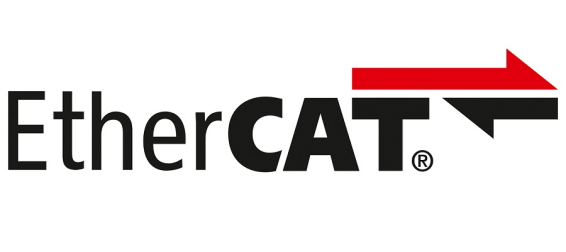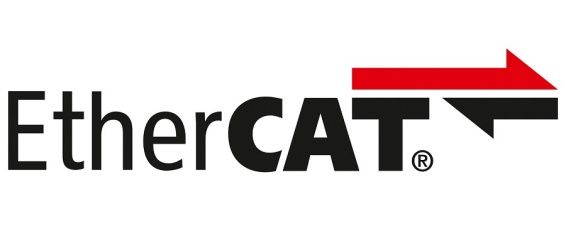"As a "young" communication protocol, EtherCAT has occupied a place in the field of industrial communication with its high performance, simple wiring and openness. Let me briefly introduce EtherCAT."
What is EtherCAT
EtherCAT (Ethernet for Control Automation Technology) is a real-time Ethernet network developed by Beckhoff in 2003. The open standard is now managed by the EtherCAT Technology Group (ETG), of which TRINAMIC Motion Control is a member. Beckhoff's original code remains unchanged, allowing devices to communicate with each other using the master/slave principle - allowing fast and dynamic communication structures. Since the data uses the same format as Ethernet, a direct connection to Ethernet is possible. No specific router or switch is required.

EtherCAT development
As a communication technology monopolizing the office field, Ethernet technology has great development in daily information life and various business fields due to its good versatility, low cost, high efficiency, high reliability and stability. Since there are so many advantages, there is a fatal shortcoming in the application in the field of automation, that is, the real-time performance cannot be guaranteed. In automation control, the amount of data in the communication between devices is usually not large, just the reading and writing of some switching values or some register values, but it often requires high data delay, such as reading the current position of a rotating servo, if If the delay is too high, the read data often deviates greatly from the current position. Since Ethernet adopts the medium access control mechanism of CSMA/CD, it is difficult to construct a real-time control network.
EtherCAT is based on the standard Ethernet physical layer. In order to obtain higher real-time performance, it is transformed on the data link layer. The real-time characteristics of controlling 100 axes can be less than 100ns, and the synchronization accuracy can be less than 100ns.
EtherCAT bus topology
EtherCAT can support all device connection topologies such as linear, tree, ring and star, and the physical medium can be 100Base-TX standard Ethernet cable or optical cable. When using 100Base-TX cables, the distance between stations can reach 100m. The entire network can connect up to 65535 devices. Use Fast Ethernet full-duplex communication technology to form a master-slave ring structure.
Data Interaction—On The Fly
The EtherCAT transmission mechanism is called "On The Fly". If the EtherCAT message is imagined as a train, each carriage with the address of the slave station corresponds to the sub-message of the slave station that needs to exchange data with the master station. Read/write slave station Station data, then there is a seat corresponding to the data address. The train departs from the main station and stops at all stations (slave stations) along the road in turn. If there is no carriage (sub-message) with its own device address, the train will be sent to the next station. If there is its own carriage, wait for passengers to get on and off the carriage. After the (data) is completed, send the train to the next station, and then return to the starting station after arriving at the terminal station, and no data will be exchanged during the return process.
The EtherCAT slave device has at least two Ethernet interfaces, and data is forwarded from one network port to the other.
EtherCAT Features
Data high-speed interaction
The EtherCAT protocol processing is completely carried out in the hardware, and the protocol ASIC can be flexibly configured, which greatly improves the work efficiency. The refresh cycle of 1000 distributed I/O data is only 30μs, including the terminal cycle time. Communication with 100 servo axes takes only 100µs. During this time, all axes can be supplied with setpoint and control data and report their actual position and status.
Distributed clocks (real-time feature)
Precise synchronization is especially important in distributed processes that widely require simultaneous actions, such as when several servo axes are performing simultaneous linkage tasks.
hot link
Many applications require I/O configuration changes during runtime. For example, processing centers with changing characteristics, tooling systems equipped with sensors, intelligent transfer equipment, flexible workpiece actuators and printing presses with individually shut down printing units, etc. The EtherCAT system takes these needs into account: the "hot-connect" function enables sections of the network to be brought together or disconnected, or reconfigured "on the fly", thereby providing flexible responsiveness to changing configurations.
Optional cable redundancy
The increasing need for increased system availability is met by optional cable redundancy so that devices can be replaced without shutting down the network. EtherCAT also supports redundant masters with hot standby. Since EtherCAT slave controllers automatically return frames as soon as they encounter an interruption, a device failure will not bring down the entire network. For example, cable protection chains can be specially configured in the form of stubs to prevent wire breakage.
openness
EtherCAT technology is not only fully compatible with Ethernet, but also has a special design openness: the protocol can coexist with other Ethernet protocols that provide various services, and all protocols coexist in the same physical medium - usually only for Overall network performance is affected to a small degree. Standard Ethernet devices can be connected to an EtherCAT system via switch terminals, which do not affect the cycle time. Devices with conventional fieldbus interfaces can be integrated into the network via the connection of the EtherCAT fieldbus master terminals. The UDP protocol variant allows the device to be integrated in any socket interface. EtherCAT is a completely open protocol, which has been recognized as a formal IEC specification (IEC/PAS62407).
Ebyte Electronic Technology Co., Ltd. specializes in R&D and production of wireless data transmission modules with various functions in various frequency bands. The products have been widely used in various application scenarios such as the Internet of Things, consumer electronics, industrial control, medical care, smart home, and highways. If you have any needs, please contact email: service-es-@cdebyte.com or visit the website: https://www.es-ebyte.com/Module-SPISOCUART


No comments yet